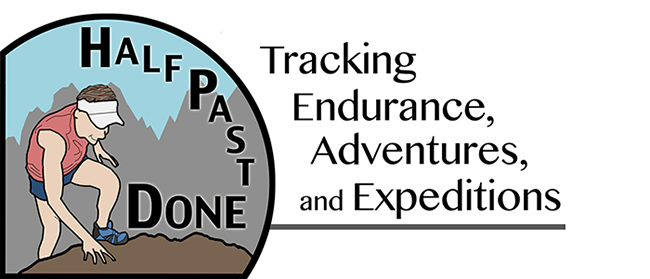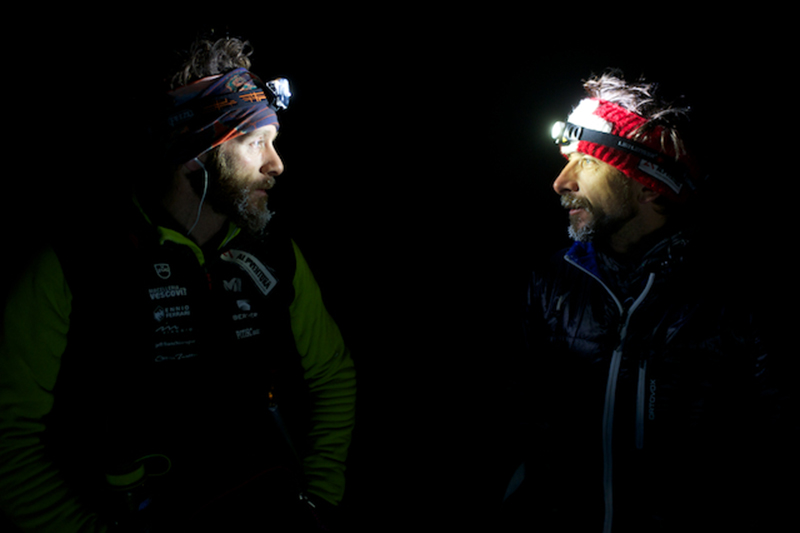Yukon Arctic Ultra racers are still marching along the Yukon Quest Trail in the human-powered winter ultramarathon that began on Sunday morning. Italian cyclist Aldo Mazzocchi was the first to arrive at the 300-mile checkpoint at Pelly Crossing on Thursday morning. He will go on in the 430-mile event. Close behind him are 430-mile foot racer Casper Wakefield and skier Enrico Ghidoni. Right now three racers remain of 18 who started the 300-mile race, and 17 of 29 remain in the 430-mile race — a testament to tough trail conditions created by warm temperatures and wind-driven snow.
Twelve runners and one cyclist finished the 100-mile event. Italian runners Stefano Gregoretti and Davide Ugolini were the first to arrive at Braeburn Lodge at 11:05 a.m. Monday for a time of 24 hours and 35 minutes. Runners Verona Koring of Austria and Laura Sly of Canada were the next to arrive at 5:50 p.m. for a time of 31 hours and 20 minutes. English cyclist Pat Cooke-Rogers finished at 4:40 a.m. Tuesday, for a time of 42 hours and 10 minutes. Twenty-two started the hundred-mile race.
There’s a popular saying in winter ultra racing that “The trail is what it is.” When racing on a surface as variable and ever-changing as snow, it’s impossible to predict what kind of conditions racers will encounter during an event. Wind-driven snow, stream overflow, blizzards, and melting temperatures can mean that one racer’s “white pavement” becomes another’s “mushy mashed potatoes” just a few hours later.
Last month’s Arrowhead 135 in Minnesota was a prime example of the unpredictable volatility of winter racing. While lead cyclists blazed new records on a relatively hard-packed trail, a storm caught up to the mid-pack cyclists and all of the runners and skiers. The result after 4 to 12 inches of wet snow covered the course was one of the largest attrition rates in the event’s history. Afterward, several Arrowhead racers who withdrew from the event as well as a few finishers reflected on the lessons they’d learned amid their experiences:
“The snowmobile ride to the next checkpoint was a mixture of emotions — from the exhilaration of riding on a three-man snowmobile, flying around a crazy cool forest in the middle of the night, going what felt like a zillion miles an hour — to pains of empathy as we rode up next to other racers hoping to catch a ride with us. Most of the expressions I saw were of pain, evidence of their fight against the brutal race conditions having long ago drained the hope out of their blood.” — http://www.misadventureracing.com/2013/02/03/the-arrowhead-135/
“Yeah, we were prepared … for riding 24 to 30 hours in very cold conditions. We were not prepared, mentally, for pushing bikes through heavy snow. We have unmeasurable experience with the hike-a-bike lifestyle. So it’s not like we couldn’t handle a seventy-mile walk through the snow. But our game plan, our strategy, did not provide for adequate time and food and mental energy to trudge through the snow for 24 to 36 hours.” — http://www.backofthepackracing.com/2013/02/arrowhead-135-rolln-way-in-back-of-pack.html
“The Arrowhead isn’t as hard as they say; it’s as hard as you say. I’ve only done it once but I get it. It’s just like it says — Rugged, Relentless, Remote — but the real challenge is it throws everything at everyone for hours on end, and you’ll eventually cross the border into your own hell. In a race where more then half dropped out, you have to be following the property lines held by Satan himself.” — http://itsthefunthatmatters.blogspot.com/2013/01/arrowhead-2013.html
“I pushed my bike up the final rise toward the volunteers working the finishing area. They cheered and coaxed me in, but they became perplexed when I stopped twenty feet before the line. The looks on their faces begged the question, “What are you doing?” My thoughts raced back to the spruce swamp when Lindsay told me that “When the conditions are good, we race each other. When the conditions are bad, we help each other.” I paused, looked back to Lindsay, then to the volunteers at the line I so desperately longed to step over and said, “I’m not crossing without him.” — http://www.ekichronicles.com/index.php?option=com_easyblog&view=entry&id=26&Itemid=107
“No tears of sorrow accompanied this DNF. I was taught a lesson that only experience can teach. Although I have walked around in a melancholy sort of mood for the last two days, I think I am most sad that the race and the experience is over.” — http://allthingsepicwithjill.blogspot.com/2013/02/2013-arrowhead-135-race-report-be.html

